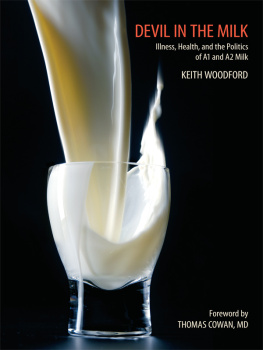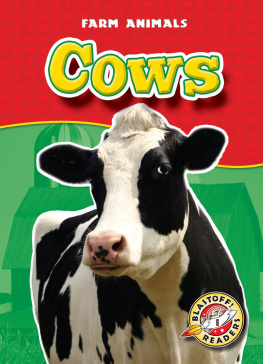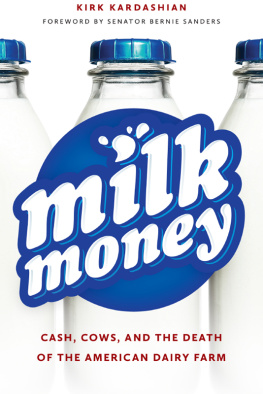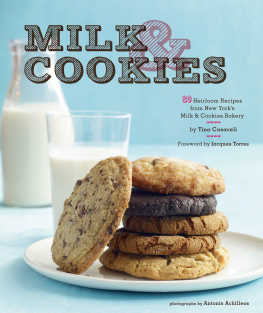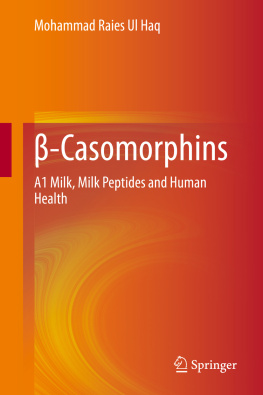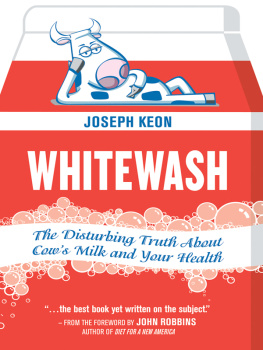
DEVIL IN THE MILK
DEVIL IN THE MILK
Illness, health, and the politics
of A1 and A2 milk
KEITH WOODFORD
Foreword by
THOMAS COWAN, MD
CHELSEA GREEN PUBLISHING
WHITE RIVER JUNCTION, VERMONT
AUTHORSNOTE
Where scientists play a major role in the milk devil story, and where their titles are known (either Professor or Doctor) I use those titles when first mentioning a person. I also use the given name. However, for some scientists, particularly those mentioned primarily as authors, neither title nor given name is evident from their publications. Most medical scientists will hold the degree of PhD (or its European equivalent) and have the title of Doctor. However, some scientists have different qualifications that may or may not provide the title of Doctor. I apologise to any scientist mentioned in this book without use of title who considers that a title should have been used. On occasions there may also be inconsistency in the use of given names. This can arise when scientists from non-Englishspeaking countries use both anglicised and non-anglicised versions. Where names are used widely within the same section, for brevity I usually repeat only the surname.
First published in 2007 by Craig Potton Publishing
98 Vickerman Street, PO Box 555, Nelson, New Zealand
Copyright 2007 Keith Woodford
All rights reserved.
This book is copyright. Apart from any fair dealing for the purposes of private study, criticism, or review as permitted by the Copyright Act, no part may be reproduced by any person without the permission of the publisher.
The author has asserted his moral rights in the work.
Printed in the United States of America
First Chelsea Green printing, March 2009
10 9 8 7 6 5 4 3 2 1 09 10 11 12
Our Commitment to Green Publishing
Chelsea Green sees publishing as a tool for cultural change and ecological stewardship. We strive to align our book manufacturing practices with our editorial mission and to reduce the impact of our business enterprise on the environment. We print our books and catalogs on chlorine-free recycled paper, using soy-based inks whenever possible. This book may cost slightly more because we use recycled paper, and we hope youll agree that its worth it. Chelsea Green is a member of the Green Press Initiative (www.greenpressinitiative.org), a nonprofit coalition of publishers, manufacturers, and authors working to protect the worlds endangered forests and conserve natural resources.
Devil in the Milk was printed on 30-percent postconsumer-waste recycled paper supplied by BookSurge. This paper is acid- and chlorine-free and is certified by the Forest Stewardship Council (FSC). The ink used in printing is biodegradable and recycled and contains no lead or toxic chemicals.
Library of Congress Cataloging-in-Publication Data
Woodford, K. B.
Devil in the milk : illness, health and politics : A1 and A2 milk / Keith Woodford.
p. cm.
First published in 2007 by Craig Potton Publishing.
Includes bibliographical references.
eBook ISBN: 978-1-60358-211-7
1. Milk--Health aspects. 2. Casein--Pathophysiology. I. Title.
RA602.M54W66 2009
613.26--dc22
2009000817
Chelsea Green Publishing Company
Post Office Box 428
White River Junction, VT 05001
(802) 295-6300
www.chelseagreen.com
Contents
My career as a physician, which now spans over 25 years, has been closely linked to milk and other dairy products. That connection is thanks in part to a book I came across early in my medical trainingThe Milk of Human Kindness Is not Pasteurized, by William Campbell Douglass, MD, a true medical rebel. It turned out to be one of the most important books on medicine that I have ever read, and it helped form my views on medicine. (The book has since been republished as TheMilk Book.)
Fueled by Dr. Douglasss insights, I quickly became an advocate for raw milk and saw a lot of positive benefits from switching people from commercial pasteurized milk and milk products to pasture-fed, raw, and cultured dairy. Already, I had long been an advocate for eating butter and other full-fat productsanother stance that has been largely vindicated by current medical research as well as the catastrophe that is margarine. This phase was followed by my introduction to Nourishing Traditions by Sally Fallonanother passionate full-fat, raw-milk advocateand the subsequent founding of the Weston A. Price Foundation, of which I am one of the founding board members. I then authored The Fourfold Pathto Healing, along with Sally and Jaimen McMillan, which among other things spoke of the dangers of commercial pasteurized dairy products and the health, social, and economic benefits that would come from our country switching to properly raised cows providing full-fat, raw dairy products.
However, all this time, I had the sense that somehow I didnt have the full story. In my practice, I was continually faced with patients whose medical situation improved only once they had stopped cows milk entirely. Butter and ghee didnt seem to cause problems, but I still saw patients whose immune systems didnt heal or who had excess congestion and its attendant problems as long as they consumed any kind of cows milk. Something was still up.
In Devil in the Milk, Farm Management and Agribusiness Professor Keith Woodford delivers what seems to be a key to answering why problems persist when some patients ingest milk. As the author explains, there is a protein called beta-casein in the milk-solid part of cows milkbut not in the fat (butter) and not in the whey. The type of beta-casein varies in cows according to their genetic makeup, but the most common types are known as A1 beta-casein and A2 beta-casein. A1Beta-casein, common in American and European cows, releases an opiate-like chemical upon digestion called BCM-7, which is the exact culprit in the myriad of symptoms I have seen all these years. These symptoms include joint and muscle pains, fatigue, digestive disturbances, and headaches. A1 beta-casein refers to the type of beta-casein that has histidine instead of proline at position 67 of the protein chain. As a result of this mutation from proline to histidine, the peptide that emerges from this amino is able to be liberated in the digestive tract of the animal or person consuming the milk. To simplify this, the cows themselves are either called A1 or A2 cows, depending on which beta-casein variant they have.
Devil in the Milk is a monumental study, convincingly laid out, and one that demands our immediate attention. If Woodford is correct, which I have no doubt he is, the effects of drinking milk from A1 cows is a piece of the puzzle that needs to be addressed. Dairy products, when properly produced and treated, have nourished generations of the healthiest humans who ever lived. If we can use this book to convert our cows to A2 cows, then use the principles of properly fed, properly prepared dairy, we will do much to reduce the disease burden in our country and find our way to the robust health that is our birthright. I encourage everyone to read this book and see for themselves.
THOMAS COWAN, MD
PREFACE TO THE
NORTH AMERICAN EDITION
When I wrote the first edition of this book, I wrote for a New Zealand and Australian audience. This was because much of the early work on A1 beta-casein and its health effects took place in New Zealand and to a lesser extent Australia. Also, these are my home audiences. But the issue of A1 beta casein and its health effects is a matter of huge importance throughout much of the world, particularly those countries that have black and white cows of European origin. The USA, Canada, Britain, and much of Scandinavia come into this category.
Next page
